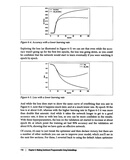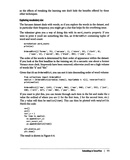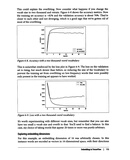![面向程序员的AI与机器学习指南 《面向程序员的AI与机器学习指南》[69M]百度网盘|pdf下载|亲测有效](/downpdf2/uploads/s0309/906df5f77ee4a386.jpg)
![《面向程序员的AI与机器学习指南》[69M]百度网盘|pdf下载|亲测有效](/downpdf2/uploads/s0309/906df5f77ee4a386.jpg)
面向程序员的AI与机器学习指南 pdf下载
8.99¥
10.99¥
内容简介
本篇主要提供面向程序员的AI与机器学习指南电子书的pdf版本下载,本电子书下载方式为百度网盘方式,点击以上按钮下单完成后即会通过邮件和网页的方式发货,有问题请联系邮箱ebook666@outlook.com
内容简介
如果你想从程序员转型为人工智能专家,这里是一个理想的起点。基于LaurenceMoroney极其成功的人工智能课程,这本入门书提供了一种面向实践、代码优先的方法,帮助你在学习关键主题的同时建立信心。你所需要的只是Python的使用经验,了解其处理数据和数组的写法。
你将学习如何实现机器学习中非常常见的场景,包括计算机视觉、自然语言处理(NLP)以及用于Web、移动、云端、嵌入式运行时的序列建模。大多数与机器学习相关的书开篇就是令人生畏的高级数学知识。这本指南提供了实用的课程,你可以直接同代码打交道。
通过使用代码示例了解机器学习的基础知识
使用TensorFlow为各种场景建模
使用仅包含一个神经元的神经网络建模
实现包括图像特征检测在内的计算机视觉
使用NLP标记和序列化单词与句子
将你的模型嵌入安卓和iOS设备
通过TensorFlowServing在Web和云端提供模型
你将学习如何实现机器学习中非常常见的场景,包括计算机视觉、自然语言处理(NLP)以及用于Web、移动、云端、嵌入式运行时的序列建模。大多数与机器学习相关的书开篇就是令人生畏的高级数学知识。这本指南提供了实用的课程,你可以直接同代码打交道。
通过使用代码示例了解机器学习的基础知识
使用TensorFlow为各种场景建模
使用仅包含一个神经元的神经网络建模
实现包括图像特征检测在内的计算机视觉
使用NLP标记和序列化单词与句子
将你的模型嵌入安卓和iOS设备
通过TensorFlowServing在Web和云端提供模型
作者简介
Laurence Moroney,在Google负责AI倡导工作,教授软件开发人员如何通过机器学习构建AI系统。他是TensorFlowYouTube频道的常客,公认的全球主题演讲者,也是一位多产的作家。
精彩书评
★“本书出色地介绍了如何使用TensorFlow来理解和实践机器学习与人工智能建模。”
——Jialin Huang,博士
★数据与应用科学家,微软公司“Laurence Moroney一直是将TensorFlow打造为全球领先的AI框架的主力。我很荣幸通过deeplearning.ai和Coursera协助他教授TensorFlow。希望你在学习TensorFlow的过程中一切顺利。有Laurence这位老师,你将展开一场伟大的冒险。”
——Andrew Ng,deeplearning.ai创始人
——Jialin Huang,博士
★数据与应用科学家,微软公司“Laurence Moroney一直是将TensorFlow打造为全球领先的AI框架的主力。我很荣幸通过deeplearning.ai和Coursera协助他教授TensorFlow。希望你在学习TensorFlow的过程中一切顺利。有Laurence这位老师,你将展开一场伟大的冒险。”
——Andrew Ng,deeplearning.ai创始人




![《UNIX/Linux 系统管理技术手册(第4版)(异步图书出品)》[64M]百度网盘|pdf下载|亲测有效](/downpdf2/uploads/rBEIC0_QXqkIAAAAAAJNwSr78lAAAAdfAHnA4EAAk3Z380.jpg)
![《音乐编程人工智能启蒙覃祖军,郑兰梅北方城》[85M]百度网盘|pdf下载|亲测有效](/downpdf2/uploads/2024-01-20/1f042736bc58c685.jpg)
![《算法秘籍》[78M]百度网盘|pdf下载|亲测有效](/downpdf2/uploads/2024-01-20/17efae70a6e8c79b.jpg)
![《数据库原理与应用SQLServer中等职业学校教材华东师范》[76M]百度网盘|pdf下载|亲测有效](/downpdf2/uploads/2024-01-20/2e01d27a32f02698.jpg)